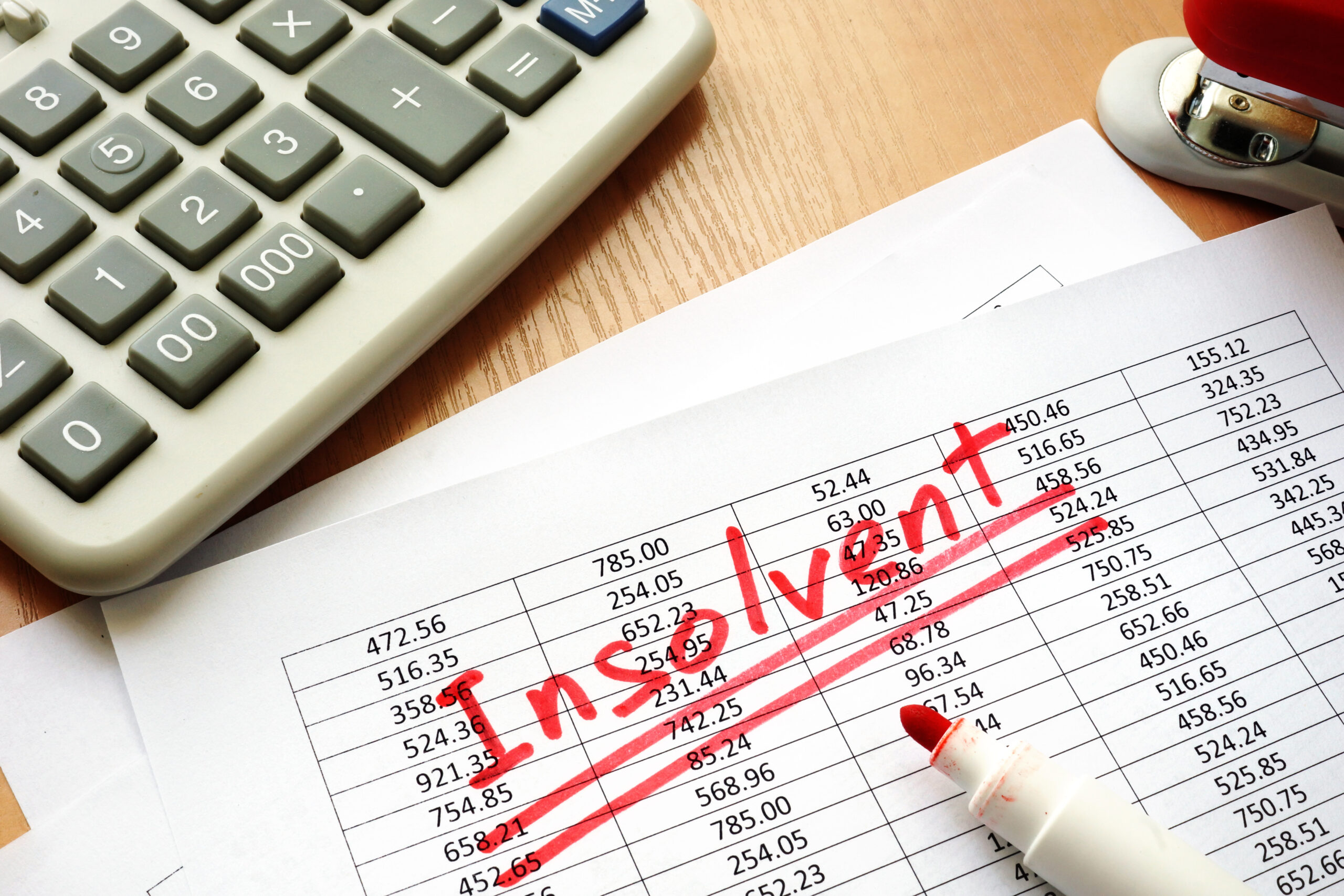Getting The Insolvency Practitioner To Work
Getting The Insolvency Practitioner To Work
Blog Article
Indicators on Insolvency Practitioner You Should Know
Table of ContentsWhat Does Insolvency Practitioner Mean?About Insolvency PractitionerSome Known Details About Insolvency Practitioner Insolvency Practitioner Can Be Fun For EveryoneThe Insolvency Practitioner IdeasInsolvency Practitioner - The FactsA Biased View of Insolvency Practitioner
Insolvency is when obligations are more than the worth of the company, or when a borrower can not pay the financial debts they owe. A company can come to be financially troubled as a result of a variety of situations that cause inadequate money circulation. When confronted with insolvency, a business or individual can call financial institutions straight and restructure financial obligations to pay them off.Bankruptcy can lead to insolvency proceedings, in which lawsuit will be taken against the financially troubled person or entity, and properties might be sold off to settle impressive financial debts. Business owners might call financial institutions straight and restructure debts into more workable installments. Lenders are typically amenable to this strategy because they wish to be paid off and prevent losses, also if the payment is on a postponed timetable.
The Facts About Insolvency Practitioner Revealed
The owner produces a proposition outlining just how the financial debt may be restructured using price reductions or various other plans for assistance. The proposal reveals lenders how business may produce adequate cash circulation for successful operations while paying its financial obligations. Generally, a forgiven financial obligation might be taken into consideration revenue by the Internal Revenue Service (INTERNAL REVENUE SERVICE).

Our Insolvency Practitioner PDFs
When procedures stop, so does the business's income (Insolvency Practitioner). Some companies become insolvent since their products or services do not evolve to fit customers' altering needs.
Costs go beyond profits and costs remain unpaid. Sorts of bankruptcy include cash-flow insolvency and balance-sheet bankruptcy. Cash-flow insolvency happens when a company has the possessions to cover their financial obligations yet they remain in the incorrect form, such as real estate instead of liquid funds. Balance-sheet bankruptcy, on the various other hand, shows an absence of properties in any form to cover financial obligations.
The IRS states that a person is insolvent when the overall liabilities surpass overall possessions. A personal bankruptcy, on the various other hand, is an actual court order that depicts just how an insolvent individual or organization will certainly settle their lenders, or exactly how they will market their assets in order to make the repayments.
Insolvency Practitioner - An Overview

Debt loan consolidation is when you integrate numerous fundings right into one new funding, frequently to attain better terms. Insolvency is not the very same as bankruptcy, although a firm that has become insolvent might apply for bankruptcy. Bankruptcy is the state of not having the ability to pay your commitments while bankruptcy is a legal procedure to release your debts.
Understanding the factors that can bring about insolvency, such as overspending, can assist you stop bankruptcy and its consequences.
The Basic Principles Of Insolvency Practitioner
It is popular that supervisors and policemans of firms (and supervisors of minimal obligation firms) owe fiduciary obligations to their organizations and their investors (or participants). These fiduciary responsibilities are specified by state statutes and, though there are variations from one state to another, they typically include a task of loyalty and a task of care.
The duty of treatment calls for supervisors and policemans to work out diligence, to make educated decisions, and to act in excellent faith to ensure that their activities are in the best interest of the firm. Though beyond the scope of this discussion, some states permit these tasks to be limited either by so keeping in mind in the organizational files or following various other needs.
The Definitive Guide for Insolvency Practitioner
Most states define bankruptcy in 2 means( 1) when a business's obligations come to be higher than the amount of its properties or (2) when the firm becomes not able to pay its financial obligations as they come to be dueand accept both definitions (Insolvency Practitioner). The change in duties takes place because when a company is insolvent, there is no worth in the company past that owed to the company's financial institutions to ensure that the equity holders no more have an economic stake in the company
Be informative post careful regarding giving shareholders preferential therapy at the expenditure of creditors (e.g., accrediting and funding a dividend or a supply redemption). Take care concerning preferential therapy between courses of shareholders. Clear up initiatives to discover all the realities prior to taking a certain course of activity; supervisors should genuinely believe that any resource kind of choices made remain in the best rate of interests of the firm in its entirety (i.e., choices will be reviewed in hindsight in light of the impact of such actions on the corporation).
In any bankruptcy or insolvency case, payments made to specific financial institutions at the expenditure of various other lenders can be clawed back, specifically if there is some link in between the business and the financial institution. Consider recommending at a yearly stockholder meeting (or any kind of various other meeting of stockholders) a resolution affirming that all prior service decisions and actions taken by the supervisors and officers of the corporation were taken in excellent confidence after an exercise of reasonable care.
The 7-Minute Rule for Insolvency Practitioner
Completely disclose any individual or business relationships with events on the various other side of purchases involving the company to avoid the look of a conflict of passion. In evaluating potential fund raising Going Here transactions or a sale of possessions of the troubled corporation, be aware that these transactions might be inspected later taking into account any type of succeeding growth of directors' fiduciary responsibilities to consist of creditors.
Report this page